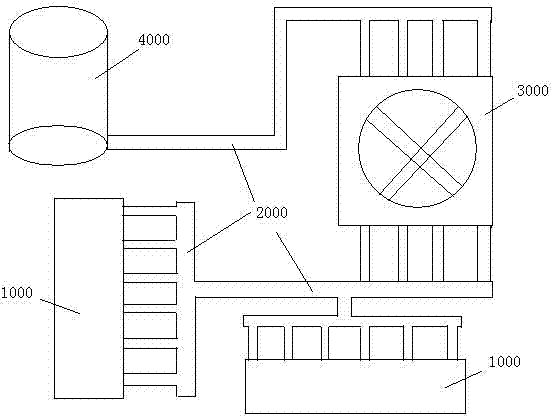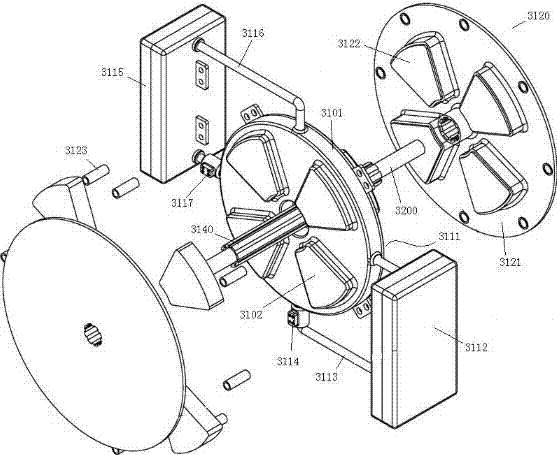Magneto-calorific system
A heat dissipation system and magneto-thermal technology, applied in the field of magneto-thermal system, can solve the problems of high loss, high construction cost, high operation cost and maintenance cost, low energy conversion efficiency, etc., and achieve long service life, wide temperature range, production low cost effect
- Summary
- Abstract
- Description
- Claims
- Application Information
AI Technical Summary
Problems solved by technology
Method used
Image
Examples
Embodiment Construction
[0036] In order to make the object, technical solution and advantages of the present invention more clear and definite, the present invention will be further described in detail below with reference to the accompanying drawings and examples.
[0037] The invention discloses a magnetocaloric system, which converts thermal energy of a heat source at 20°C to 200°C into mechanical energy, such as figure 1 As shown, it includes a thermal energy collection device 1000 for collecting thermal energy, a thermal energy transmission device 2000 for transmitting thermal energy, a magnetothermal engine unit 3000 for converting thermal energy into mechanical energy output, and a cooling system 4000 for discharging residual heat; the thermal energy collection device 1000 and the magnetothermal engine The unit 3000 is connected through the thermal energy transmission device 2000, and the magneto-thermal engine unit 3000 and the cooling system 4000 are connected through the thermal energy trans...
PUM
 Login to View More
Login to View More Abstract
Description
Claims
Application Information
 Login to View More
Login to View More - R&D
- Intellectual Property
- Life Sciences
- Materials
- Tech Scout
- Unparalleled Data Quality
- Higher Quality Content
- 60% Fewer Hallucinations
Browse by: Latest US Patents, China's latest patents, Technical Efficacy Thesaurus, Application Domain, Technology Topic, Popular Technical Reports.
© 2025 PatSnap. All rights reserved.Legal|Privacy policy|Modern Slavery Act Transparency Statement|Sitemap|About US| Contact US: help@patsnap.com



